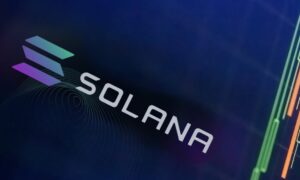Introduction
In the rapidly evolving landscape of blockchain technology, Polkadot has emerged as a transformative force, redefining the possibilities of decentralized networks. This comprehensive guide aims to unravel the intricacies of the Polkadot ecosystem, shedding light on its architecture, key components, and its impact on the broader blockchain industry.
Understanding Polkadot’s Vision:
At the heart of Polkadot’s vision is the idea of interoperability. Unlike traditional blockchain networks that operate in isolation, Polkadot envisions a connected and collaborative ecosystem where different blockchains can seamlessly communicate and share information. This interoperability is facilitated by the relay chain, Polkadot’s main component.
The Relay Chain and Its Role:
The relay chain serves as the backbone of the Polkadot network, connecting various parachains. Parachains, short for parallel chains, are individual blockchains that run in parallel to each other, connected to the relay chain. This unique architecture enables Polkadot to overcome the scalability issues that have plagued some earlier blockchain platforms.
Consensus Mechanism – Nominated Proof-of-Stake (NPoS):
Polkadot employs a novel consensus mechanism known as Nominated Proof-of-Stake (NPoS). In NPoS, token holders nominate validators who secure the network and produce new blocks. This approach enhances security while maintaining a high level of scalability, a crucial factor in the success of any blockchain project.
Governance and Upgradability:
Governance in Polkadot is a collaborative effort among token holders who have the power to propose and vote on network upgrades. This decentralized governance model ensures that the network remains adaptable to evolving technological needs. The ability to upgrade without hard forks sets Polkadot apart, offering a more flexible and dynamic blockchain infrastructure.
DOT Token – The Fuel of the Polkadot Ecosystem:
At the core of the Polkadot ecosystem is its native cryptocurrency, the DOT token. DOT plays a multifaceted role within the network. It is used for staking, granting holders the right to participate in the consensus process and earn rewards. Additionally, DOT holders can participate in governance decisions, giving them a say in the evolution of the Polkadot network.
Parachains and Their Diverse Use Cases:
One of the standout features of Polkadot is its support for parachains, each catering to specific use cases. Whether it’s decentralized finance (DeFi), supply chain management, or identity verification, parachains provide a customizable and efficient solution. This flexibility positions Polkadot as a versatile platform capable of accommodating a wide array of decentralized applications.
Security and Interoperability – Polkadot’s Competitive Edge:
Polkadot’s commitment to security is evident in its unique design. The relay chain’s role in facilitating communication among parachains not only enhances scalability but also strengthens the overall security of the network. The interoperability aspect ensures that data and assets can move seamlessly between different blockchains, opening up new possibilities for collaboration and innovation.
Challenges and Future Developments:
While Polkadot has achieved significant milestones, it is not without its challenges. As the ecosystem continues to grow, scalability and user adoption remain focal points for improvement. The development team, however, is actively addressing these challenges through ongoing upgrades and improvements.
Looking ahead, Polkadot’s roadmap includes the integration of new features such as parachain auctions, enabling projects to secure a slot on the relay chain. This development is poised to further enhance the platform’s scalability and attract a diverse range of decentralized applications.
Conclusion:
Polkadot stands as a beacon of innovation in the blockchain space, offering a comprehensive solution to the challenges faced by earlier generations of blockchain networks. From its unique relay chain architecture to the versatile parachains and the robust governance model, Polkadot represents a paradigm shift in how we perceive and utilize decentralized technologies. As the ecosystem continues to evolve, Polkadot is undoubtedly a key player in shaping the future of blockchain, fostering collaboration, security, and interoperability in the ever-expanding digital landscape.



































